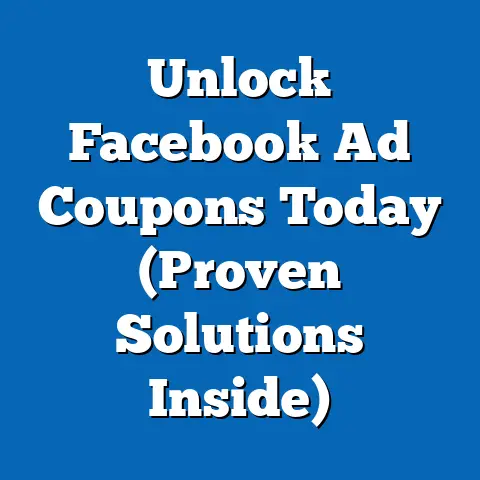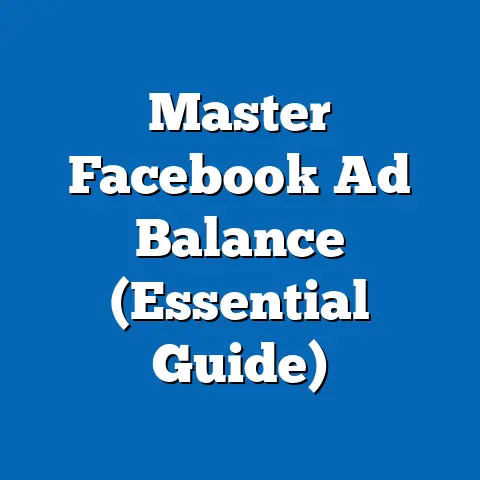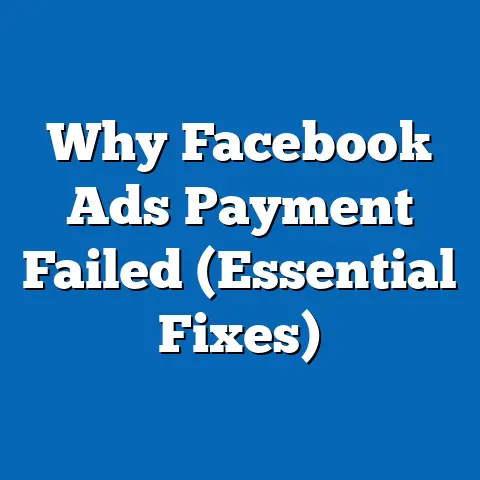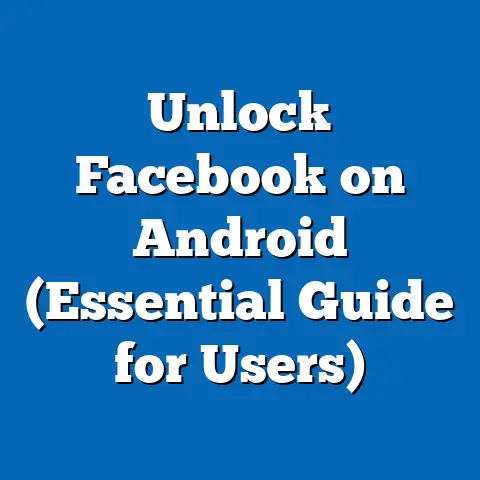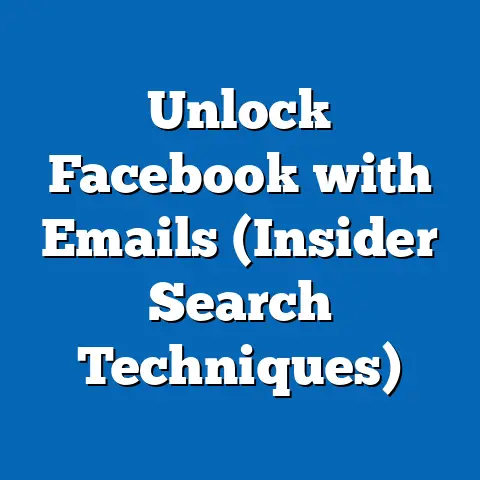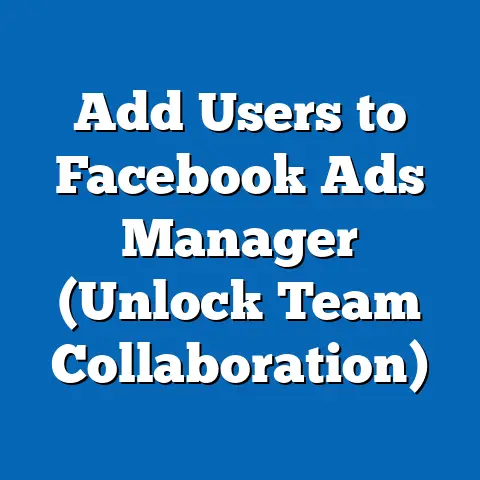32 Facebook Ad Examples That Convert (Proven Strategies)
The pet industry is booming. Think about it: our pets are more than just animals; they’re family. According to the American Pet Products Association (APPA), pet industry expenditures in the U.S. reached a staggering $103.6 billion in 2021, and the numbers continue to climb. This massive market presents incredible opportunities for businesses, but only if they know how to effectively reach their target audience.
Facebook, with its incredibly detailed targeting capabilities, is the perfect place to connect with pet owners. But here’s the catch: pet owners are bombarded with ads daily. To stand out, you need ads that not only grab their attention but also speak to their emotions, their values, and their unique relationship with their furry, scaly, or feathered companions.
That’s why I’ve put together this guide, showcasing 32 Facebook ad examples that convert. We’ll explore different strategies, dissect what makes them effective, and give you actionable takeaways you can implement in your own campaigns. Get ready to unleash the power of Facebook advertising and connect with the pet-loving community like never before!
The Power of Visuals in Pet Ads
In the world of Facebook advertising, visuals are king. And when it comes to pet ads, this couldn’t be truer. Think about your own experience scrolling through Facebook – what makes you stop? Often, it’s a captivating image or a heartwarming video.
Pet owners are naturally drawn to images and videos of animals. It’s in our DNA! We love seeing happy, healthy pets, especially when they’re interacting with products or services we might be interested in. A well-chosen visual can instantly grab attention, evoke positive emotions, and communicate your message more effectively than words alone.
Here are four examples of Facebook ads that nail the visual aspect:
Example 1: Chewy’s Adorable Product Showcase
- Visual Description: A high-quality image of a fluffy golden retriever gleefully playing with a brand-new toy from Chewy. The dog is clearly enjoying itself, and the toy looks durable and appealing.
- Key Learning Point: Showcase your products in action! Let potential customers see how their pets will benefit.
- Why it Works:
- Relatability: Golden retrievers are a popular breed, making the ad relatable to a wide audience.
- Happiness: The dog’s joyful expression is contagious, creating a positive association with the Chewy brand.
- Product Focus: The toy is clearly visible and looks like something any dog would love.
- Call to Action: “Shop Now” button leads directly to the product page.
- Relatability: Golden retrievers are a popular breed, making the ad relatable to a wide audience.
- Happiness: The dog’s joyful expression is contagious, creating a positive association with the Chewy brand.
- Product Focus: The toy is clearly visible and looks like something any dog would love.
- Call to Action: “Shop Now” button leads directly to the product page.
Example 2: Petco’s Heartwarming Adoption Story
- Visual Description: A short video featuring a rescued dog being adopted by a loving family. The video captures the emotional moment of the dog meeting its new owners and settling into its forever home.
- Key Learning Point: Tap into the power of emotion. Adoption stories resonate deeply with pet lovers.
- Why it Works:
- Emotional Connection: The video evokes feelings of compassion and happiness.
- Brand Association: Petco is positioned as a company that cares about animal welfare.
- Shareability: The video is likely to be shared by users who support animal adoption.
- Call to Action: “Learn More” button directs users to Petco’s adoption resources.
- Emotional Connection: The video evokes feelings of compassion and happiness.
- Brand Association: Petco is positioned as a company that cares about animal welfare.
- Shareability: The video is likely to be shared by users who support animal adoption.
- Call to Action: “Learn More” button directs users to Petco’s adoption resources.
Example 3: BarkBox’s Playful Unboxing
- Visual Description: A fast-paced, engaging video of a dog enthusiastically unboxing a BarkBox subscription box. The video highlights the variety of toys and treats included in the box.
- Key Learning Point: Show the excitement! Unboxing videos are incredibly popular, especially when pets are involved.
- Why it Works:
- Curiosity: The video creates a sense of anticipation and curiosity about what’s inside the box.
- Variety: The video showcases the wide range of products included in the BarkBox subscription.
- Entertainment: The dog’s playful behavior makes the video entertaining to watch.
- Call to Action: “Subscribe Now” button encourages users to sign up for a BarkBox subscription.
- Curiosity: The video creates a sense of anticipation and curiosity about what’s inside the box.
- Variety: The video showcases the wide range of products included in the BarkBox subscription.
- Entertainment: The dog’s playful behavior makes the video entertaining to watch.
- Call to Action: “Subscribe Now” button encourages users to sign up for a BarkBox subscription.
Example 4: User-Generated Content from a Local Groomer
- Visual Description: A carousel ad featuring several high-quality photos of dogs after being groomed at a local pet salon. Each photo showcases a different breed and grooming style.
- Key Learning Point: Leverage user-generated content! It’s authentic and builds trust.
- Why it Works:
- Social Proof: The photos demonstrate the groomer’s skill and the satisfaction of their customers.
- Breed Specificity: The variety of breeds caters to a wide range of dog owners.
- Local Relevance: The ad targets users in the local area, making it more relevant.
- Call to Action: “Book Appointment” button makes it easy for users to schedule a grooming session.
- Social Proof: The photos demonstrate the groomer’s skill and the satisfaction of their customers.
- Breed Specificity: The variety of breeds caters to a wide range of dog owners.
- Local Relevance: The ad targets users in the local area, making it more relevant.
- Call to Action: “Book Appointment” button makes it easy for users to schedule a grooming session.
Takeaway: Your visuals should be high-quality, engaging, and relevant to your target audience. Consider using images or videos of pets interacting with your products or services, telling heartwarming adoption stories, or showcasing the excitement of unboxing. Don’t be afraid to leverage user-generated content to build trust and authenticity.
Next Steps: Review your existing Facebook ads and evaluate the quality and effectiveness of your visuals. Experiment with different types of visuals and track their performance to see what resonates best with your audience.
Storytelling and Emotional Appeal
While visuals grab attention, storytelling and emotional appeal are what truly connect with pet owners on a deeper level. As a marketer, I’ve learned that people don’t just buy products; they buy into stories and emotions.
Pet owners have a unique and powerful bond with their animals. They see them as members of their family, and they’re willing to spend money on products and services that improve their pets’ lives. By tapping into this emotional connection, you can create ads that resonate deeply with your audience and drive conversions.
Here are four examples of Facebook ads that excel at storytelling and emotional appeal:
Example 5: The Dodo’s Rescue Story
- Visual Description: A video featuring the story of a dog who was rescued from a shelter and given a second chance at life. The video follows the dog’s journey from being scared and lonely to being happy and loved.
- Key Learning Point: Share inspiring stories! Rescue stories tug at the heartstrings of animal lovers.
- Why it Works:
- Emotional Impact: The video evokes feelings of compassion, hope, and joy.
- Brand Alignment: The Dodo is known for its heartwarming animal stories, making the ad consistent with their brand.
- Shareability: The video is likely to be shared by users who support animal rescue.
- Call to Action: “Donate Now” button encourages users to support The Dodo’s mission.
- Emotional Impact: The video evokes feelings of compassion, hope, and joy.
- Brand Alignment: The Dodo is known for its heartwarming animal stories, making the ad consistent with their brand.
- Shareability: The video is likely to be shared by users who support animal rescue.
- Call to Action: “Donate Now” button encourages users to support The Dodo’s mission.
Example 6: Purina’s “Better With Pets” Campaign
- Visual Description: A series of images and videos showcasing the unique bond between pets and their owners. The ads highlight the positive impact pets have on our lives, such as reducing stress, improving mental health, and providing companionship.
- Key Learning Point: Focus on the benefits of pet ownership! Highlight the positive impact pets have on our lives.
- Why it Works:
- Relatability: The ads depict everyday moments that pet owners can easily relate to.
- Emotional Connection: The ads tap into the deep love and affection we have for our pets.
- Brand Association: Purina is positioned as a company that understands and values the human-animal bond.
- Call to Action: “Learn More” button directs users to Purina’s website for more information.
- Relatability: The ads depict everyday moments that pet owners can easily relate to.
- Emotional Connection: The ads tap into the deep love and affection we have for our pets.
- Brand Association: Purina is positioned as a company that understands and values the human-animal bond.
- Call to Action: “Learn More” button directs users to Purina’s website for more information.
Example 7: Subaru’s “Dog Tested. Dog Approved.” Campaign
- Visual Description: Humorous videos featuring dogs “testing” the features of Subaru vehicles. The dogs are shown enjoying the spacious interiors, comfortable seating, and safety features of the cars.
- Key Learning Point: Use humor to connect with your audience! Dogs “testing” cars is a unique and memorable concept.
- Why it Works:
- Entertainment: The videos are funny and engaging to watch.
- Unique Selling Proposition: The ads highlight the features of Subaru vehicles that are particularly appealing to dog owners.
- Brand Personality: The ads portray Subaru as a fun-loving and dog-friendly brand.
- Call to Action: “Build Your Own” button encourages users to customize a Subaru vehicle.
- Entertainment: The videos are funny and engaging to watch.
- Unique Selling Proposition: The ads highlight the features of Subaru vehicles that are particularly appealing to dog owners.
- Brand Personality: The ads portray Subaru as a fun-loving and dog-friendly brand.
- Call to Action: “Build Your Own” button encourages users to customize a Subaru vehicle.
Example 8: A Local Vet’s Heartfelt Message
- Visual Description: A simple video of a local veterinarian talking directly to the camera about the importance of preventative care for pets. The veterinarian shares personal anecdotes about the pets they’ve helped and the importance of early detection of health issues.
- Key Learning Point: Authenticity matters! Share personal stories and demonstrate your passion for animal care.
- Why it Works:
- Trustworthiness: The veterinarian’s genuine concern for animal welfare builds trust with the audience.
- Local Connection: The ad targets users in the local area, making it more relevant.
- Educational Value: The ad provides valuable information about preventative care.
- Call to Action: “Schedule Appointment” button makes it easy for users to book a check-up for their pets.
- Trustworthiness: The veterinarian’s genuine concern for animal welfare builds trust with the audience.
- Local Connection: The ad targets users in the local area, making it more relevant.
- Educational Value: The ad provides valuable information about preventative care.
- Call to Action: “Schedule Appointment” button makes it easy for users to book a check-up for their pets.
Takeaway: Don’t just sell products or services; tell stories that resonate with your audience on an emotional level. Share inspiring rescue stories, highlight the positive impact pets have on our lives, use humor to connect with your audience, and demonstrate your passion for animal care.
Next Steps: Brainstorm ways to incorporate storytelling and emotional appeal into your Facebook ads. Consider sharing customer testimonials, creating videos that showcase the human-animal bond, or highlighting the positive impact your products or services have on pets’ lives.
Targeting and Personalization
One of the biggest advantages of Facebook advertising is its incredibly detailed targeting capabilities. You can target users based on their demographics, interests, behaviors, and even their connections. This allows you to create ads that are highly relevant and personalized to your target audience.
For pet-related businesses, targeting is crucial. You don’t want to waste your ad spend on people who don’t own pets or aren’t interested in your products or services. Instead, you want to focus on reaching the right people with the right message at the right time.
Here are four examples of Facebook ads that effectively utilize targeting and personalization:
Example 9: Rover.com’s Breed-Specific Targeting
- Visual Description: An ad featuring a specific dog breed (e.g., a Labrador Retriever) and text that reads, “Looking for a Labrador Retriever sitter in [Your City]? Find trusted and reliable pet sitters on Rover.com.”
- Key Learning Point: Get specific with your targeting! Breed-specific ads can be highly effective for reaching niche audiences.
- Why it Works:
- Relevance: The ad is highly relevant to Labrador Retriever owners in the targeted city.
- Personalization: The ad speaks directly to the needs of a specific type of pet owner.
- Call to Action: “Find a Sitter” button leads directly to a list of pet sitters in the user’s area.
- Relevance: The ad is highly relevant to Labrador Retriever owners in the targeted city.
- Personalization: The ad speaks directly to the needs of a specific type of pet owner.
- Call to Action: “Find a Sitter” button leads directly to a list of pet sitters in the user’s area.
Example 10: Chewy’s Targeted Birthday Promotions
- Visual Description: An email-style ad featuring a personalized birthday message for the user’s pet. The ad includes a photo of the pet (if available) and a special discount on birthday treats and toys.
- Key Learning Point: Celebrate milestones! Birthday promotions are a great way to show your customers you care.
- Why it Works:
- Personalization: The ad is tailored to the user’s specific pet.
- Emotional Connection: The ad taps into the love and affection we have for our pets.
- Incentive: The discount on birthday treats and toys encourages users to make a purchase.
- Data Collection: Requires collecting pet birthday information, which can be used for future marketing efforts.
- Personalization: The ad is tailored to the user’s specific pet.
- Emotional Connection: The ad taps into the love and affection we have for our pets.
- Incentive: The discount on birthday treats and toys encourages users to make a purchase.
- Data Collection: Requires collecting pet birthday information, which can be used for future marketing efforts.
Example 11: A Local Pet Store’s Geographic Targeting
- Visual Description: An ad featuring a map of the local area and text that reads, “Visit our pet store at [Address] for all your pet supply needs. We’re just around the corner!”
- Key Learning Point: Focus on local customers! Geographic targeting is essential for brick-and-mortar businesses.
- Why it Works:
- Relevance: The ad is highly relevant to users in the local area.
- Convenience: The ad highlights the proximity of the pet store to the user’s location.
- Call to Action: “Get Directions” button makes it easy for users to find the pet store.
- Relevance: The ad is highly relevant to users in the local area.
- Convenience: The ad highlights the proximity of the pet store to the user’s location.
- Call to Action: “Get Directions” button makes it easy for users to find the pet store.
Example 12: An Animal Shelter’s Interest-Based Targeting
- Visual Description: An ad featuring a photo of an adorable adoptable cat and text that reads, “Looking for a feline friend? We have many wonderful cats waiting for their forever homes. Visit our shelter today!” The ad targets users who have expressed an interest in cats or animal adoption.
- Key Learning Point: Target users based on their interests! Reach people who are already interested in what you have to offer.
- Why it Works:
- Relevance: The ad is highly relevant to users who are interested in cats or animal adoption.
- Emotional Appeal: The photo of the adoptable cat tugs at the heartstrings of animal lovers.
- Call to Action: “Visit Shelter” button encourages users to visit the animal shelter and meet the cats.
- Relevance: The ad is highly relevant to users who are interested in cats or animal adoption.
- Emotional Appeal: The photo of the adoptable cat tugs at the heartstrings of animal lovers.
- Call to Action: “Visit Shelter” button encourages users to visit the animal shelter and meet the cats.
Takeaway: Take advantage of Facebook’s powerful targeting capabilities to reach the right people with the right message. Consider targeting users based on their demographics, interests, behaviors, connections, and even their pets’ breeds and birthdays.
Next Steps: Review your existing Facebook ad targeting settings and identify opportunities for improvement. Experiment with different targeting options and track their performance to see what works best for your business.
Promotions and Special Offers
Let’s face it, everyone loves a good deal. And pet owners are no exception. Offering promotions and special offers in your Facebook ads can be a highly effective way to drive conversions and attract new customers.
However, it’s important to use promotions and special offers strategically. You don’t want to devalue your products or services, or attract customers who are only interested in the discount. Instead, you want to use promotions and special offers to incentivize purchases, reward loyal customers, and attract new customers who are genuinely interested in what you have to offer.
Here are four examples of Facebook ads that effectively utilize promotions and special offers:
Example 13: PetSmart’s Percentage-Based Discount
- Visual Description: An ad featuring a large percentage-based discount on a specific category of pet supplies (e.g., “20% Off All Dog Food”). The ad includes a clear and concise message about the discount and its expiration date.
- Key Learning Point: Percentage-based discounts can be very effective! They provide a clear and easy-to-understand incentive.
- Why it Works:
- Clarity: The discount is clearly stated and easy to understand.
- Urgency: The expiration date creates a sense of urgency and encourages users to act quickly.
- Relevance: The discount is targeted to a specific category of pet supplies, making it more relevant to pet owners.
- Call to Action: “Shop Now” button leads directly to the discounted products.
- Clarity: The discount is clearly stated and easy to understand.
- Urgency: The expiration date creates a sense of urgency and encourages users to act quickly.
- Relevance: The discount is targeted to a specific category of pet supplies, making it more relevant to pet owners.
- Call to Action: “Shop Now” button leads directly to the discounted products.
Example 14: Amazon’s Buy-One-Get-One-Free Offer
- Visual Description: An ad featuring a buy-one-get-one-free offer on a specific brand of pet treats. The ad includes a photo of the treats and a clear explanation of the offer.
- Key Learning Point: BOGO offers are a classic way to incentivize purchases! They provide great value for customers.
- Why it Works:
- Value: The offer provides a significant value for customers.
- Incentive: The offer encourages users to purchase more of the product.
- Brand Awareness: The offer promotes a specific brand of pet treats.
- Call to Action: “Add to Cart” button makes it easy for users to take advantage of the offer.
- Value: The offer provides a significant value for customers.
- Incentive: The offer encourages users to purchase more of the product.
- Brand Awareness: The offer promotes a specific brand of pet treats.
- Call to Action: “Add to Cart” button makes it easy for users to take advantage of the offer.
Example 15: A Local Groomer’s First-Time Customer Discount
- Visual Description: An ad featuring a discount for first-time customers at a local pet grooming salon. The ad includes a photo of a beautifully groomed pet and a clear explanation of the discount.
- Key Learning Point: Attract new customers with a special offer! First-time customer discounts can be very effective.
- Why it Works:
- Incentive: The discount encourages new customers to try the grooming salon.
- Local Relevance: The ad targets users in the local area, making it more relevant.
- Social Proof: The photo of the beautifully groomed pet demonstrates the quality of the salon’s services.
- Call to Action: “Book Appointment” button makes it easy for users to schedule a grooming session.
- Incentive: The discount encourages new customers to try the grooming salon.
- Local Relevance: The ad targets users in the local area, making it more relevant.
- Social Proof: The photo of the beautifully groomed pet demonstrates the quality of the salon’s services.
- Call to Action: “Book Appointment” button makes it easy for users to schedule a grooming session.
Example 16: A Subscription Box’s Free Gift with Purchase
- Visual Description: An ad featuring a free gift with purchase for new subscribers to a pet subscription box. The ad includes a photo of the free gift and a clear explanation of the offer.
- Key Learning Point: Free gifts can be a powerful motivator! They add extra value to the purchase.
- Why it Works:
- Value: The free gift provides added value for customers.
- Incentive: The free gift encourages users to subscribe to the subscription box.
- Curiosity: The free gift creates curiosity about the subscription box and its contents.
- Call to Action: “Subscribe Now” button encourages users to sign up for a subscription.
- Value: The free gift provides added value for customers.
- Incentive: The free gift encourages users to subscribe to the subscription box.
- Curiosity: The free gift creates curiosity about the subscription box and its contents.
- Call to Action: “Subscribe Now” button encourages users to sign up for a subscription.
Takeaway: Use promotions and special offers strategically to incentivize purchases, reward loyal customers, and attract new customers. Consider offering percentage-based discounts, buy-one-get-one-free offers, first-time customer discounts, or free gifts with purchase.
Next Steps: Brainstorm different promotions and special offers that would be appealing to your target audience. Experiment with different types of offers and track their performance to see what drives the most conversions.
Community Engagement and Brand Loyalty
Building a strong community around your brand is essential for long-term success. When customers feel connected to your brand and to each other, they’re more likely to become loyal customers and advocate for your business.
Facebook ads can be a powerful tool for fostering community engagement and building brand loyalty. By creating ads that encourage interaction, you can create a sense of community among pet owners and strengthen their connection to your brand.
Here are four examples of Facebook ads that effectively foster community engagement and build brand loyalty:
Example 17: A Pet Food Company’s Photo Contest
- Visual Description: An ad featuring a call for users to submit photos of their pets enjoying the company’s pet food. The ad includes a prize for the best photo.
- Key Learning Point: Photo contests are a fun and engaging way to get users involved! They encourage user-generated content and brand interaction.
- Why it Works:
- Engagement: The contest encourages users to submit photos of their pets.
- User-Generated Content: The contest generates valuable user-generated content.
- Brand Awareness: The contest promotes the company’s pet food.
- Call to Action: “Submit Photo” button makes it easy for users to participate in the contest.
- Engagement: The contest encourages users to submit photos of their pets.
- User-Generated Content: The contest generates valuable user-generated content.
- Brand Awareness: The contest promotes the company’s pet food.
- Call to Action: “Submit Photo” button makes it easy for users to participate in the contest.
Example 18: A Pet Supply Store’s “Ask the Vet” Q&A Session
- Visual Description: An ad featuring a local veterinarian who will be answering questions about pet health in a live Facebook Q&A session.
- Key Learning Point: Provide valuable information and expertise! Q&A sessions can build trust and establish you as an authority in your field.
- Why it Works:
- Value: The Q&A session provides valuable information for pet owners.
- Engagement: The Q&A session encourages users to ask questions and interact with the veterinarian.
- Brand Association: The pet supply store is positioned as a trusted source of information and expertise.
- Call to Action: “Ask a Question” button encourages users to submit their questions for the Q&A session.
- Value: The Q&A session provides valuable information for pet owners.
- Engagement: The Q&A session encourages users to ask questions and interact with the veterinarian.
- Brand Association: The pet supply store is positioned as a trusted source of information and expertise.
- Call to Action: “Ask a Question” button encourages users to submit their questions for the Q&A session.
Example 19: A Dog Walking Service’s “Share Your Dog Walking Story” Campaign
- Visual Description: An ad asking users to share their favorite dog walking stories and photos. The ad highlights the benefits of dog walking and encourages users to share their experiences.
- Key Learning Point: Encourage storytelling and sharing of experiences! This builds community and fosters a sense of belonging.
- Why it Works:
- Engagement: The campaign encourages users to share their dog walking stories and photos.
- Community Building: The campaign creates a sense of community among dog walkers.
- Brand Awareness: The campaign promotes the dog walking service.
- Call to Action: “Share Your Story” button makes it easy for users to participate in the campaign.
- Engagement: The campaign encourages users to share their dog walking stories and photos.
- Community Building: The campaign creates a sense of community among dog walkers.
- Brand Awareness: The campaign promotes the dog walking service.
- Call to Action: “Share Your Story” button makes it easy for users to participate in the campaign.
Example 20: A Cat Toy Company’s “Name Our New Toy” Contest
- Visual Description: An ad featuring a new cat toy and asking users to submit names for the toy. The ad includes a prize for the winning name.
- Key Learning Point: Involve your audience in your product development! This makes them feel valued and invested in your brand.
- Why it Works:
- Engagement: The contest encourages users to submit names for the toy.
- Community Building: The contest creates a sense of community among cat owners.
- Product Awareness: The contest promotes the new cat toy.
- Call to Action: “Submit Name” button makes it easy for users to participate in the contest.
- Engagement: The contest encourages users to submit names for the toy.
- Community Building: The contest creates a sense of community among cat owners.
- Product Awareness: The contest promotes the new cat toy.
- Call to Action: “Submit Name” button makes it easy for users to participate in the contest.
Takeaway: Foster community engagement and build brand loyalty by creating ads that encourage interaction, provide valuable information, and involve your audience in your brand. Consider running photo contests, hosting Q&A sessions, encouraging storytelling, or asking for feedback on new products.
Next Steps: Brainstorm ways to create ads that encourage community engagement and build brand loyalty. Consider what types of activities would be most appealing to your target audience and how you can incentivize participation.
Conclusion
We’ve covered a lot of ground in this guide, exploring 32 Facebook ad examples that convert for pet-related businesses. From the power of visuals to the importance of storytelling, targeting, promotions, and community engagement, we’ve dissected what makes these ads effective and provided actionable takeaways you can implement in your own campaigns.
The key takeaway is this: to succeed on Facebook, you need to understand your audience. Pet owners are passionate, emotional, and deeply connected to their animals. Your ads need to reflect this understanding and speak to their unique needs and values.
Here’s a quick recap of the key strategies we discussed:
- Visuals: Use high-quality, engaging visuals that showcase your products or services in action.
- Storytelling: Tell stories that resonate with your audience on an emotional level.
- Targeting: Take advantage of Facebook’s detailed targeting capabilities to reach the right people.
- Promotions: Use promotions and special offers strategically to incentivize purchases.
- Community Engagement: Foster community engagement and build brand loyalty by creating ads that encourage interaction.
Remember, Facebook advertising is an ongoing process. You need to constantly test, analyze, and optimize your campaigns to achieve the best results. Don’t be afraid to experiment with different strategies and see what works best for your business.
I encourage you to review your own Facebook ads through the lens of the examples we’ve discussed. Ask yourself:
- Are my visuals engaging and relevant to my target audience?
- Am I telling stories that resonate with pet owners on an emotional level?
- Am I targeting the right people with the right message?
- Am I offering promotions and special offers that incentivize purchases?
- Am I fostering community engagement and building brand loyalty?
By asking yourself these questions and implementing the strategies we’ve discussed, you can create Facebook ads that truly connect with pet owners and drive conversions for your business. Now go out there and create some amazing ads!

